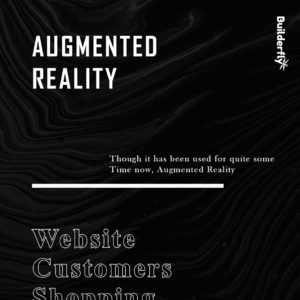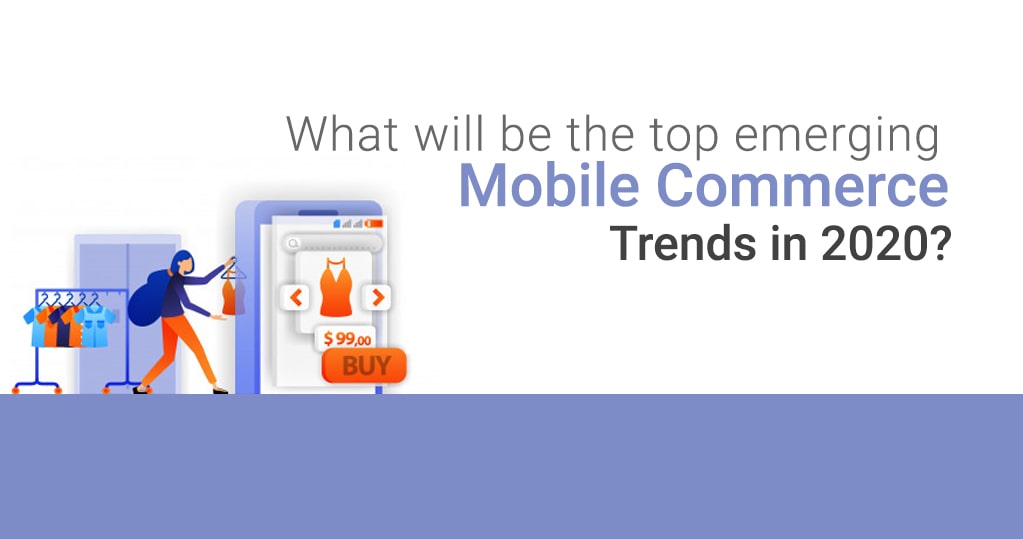When ecommerce was introduced to the world, the revolutionary idea was not accepted with open arms. However, gradually it was gaining popularity while the world was embracing mobile technologies, especially smartphones. This lead to the development of mobile commerce, popularly named as m-commerce. Mobile devices have influenced nearly every facet of modern lives. Today, smartphones accompany us everywhere, and it would not be incorrect to say that it impacts the way we work, live, and shop.
For a decade, mobile commerce has taken a remarkable velocity. It is estimated that by the end of 2021, mobile ecommerce sales globally will be equal to $3.56 trillion which equals 72.9%. Also, there will be about 80% increase in online payments by 2024. Did you know that over 1.2 billion people from across the globe access the internet from their smartphones? One research shows that the consumers who get a bad experience on a mobile ecommerce store are 62% less prone to purchase again from your store. Looking into these and many more stats, we decided to write an exclusive blog to let you know the top emerging mobile commerce trends in 2020. Shall we begin?
The top emerging mobile commerce trends in 2020
The domain of mobile commerce growing by leaps and bounds; in such a way that it has become nearly impossible for anyone to outdo the ecommerce market without giving a thought to investing their ideas in mobile commerce. A few current m-commerce statistics are as follows:
~49% of consumers are shopping online using a smartphone.
~10.21% of web visitors from around the world added products to their carts on a mobile.
~41.32% of conversions in the retail world is due to the use of mobile devices.
~1.82% of the conversions were generated through mobile devices.
~2.11% of conversions are from iOS devices and 1.81% from Android devices.
The Middle Eastern countries as well as the Asia Pacific shall witness amplified friction in the market between 2020 and 2024.
Mobile commerce is taking over 73% of the global ecommerce market share according to Statista by 2021.
Whether you are using an ecommerce platform to sell online or you are selling on a marketplace or even selling through your personal website, as an ecommerce seller, it is essential to stay updated with the latest m-commerce trends. Our team of professionals invested quality time in researching and analyzing the most recent trends in the mobile commerce industry, in 2020. The following are some of the top emerging mobile commerce trends in 2020:
Smart Personalization

Roughly 61% of consumers using smartphones prefer getting a personalized experience. Due to this reason, personalization has been a constant trend since 2018. However, this trend got upgraded in 2020 to smart personalization, which will become the new face of the mobile commerce domain. Businesses are now focusing on behavioral analysis along with the marketing of mobile apps. It simply means that online sellers and marketers’ shall study the data collected from the consumers’ that include demographics, previously searched products, a behavioral shift in shopping, location of the login, and other such aspects to send them the right messages at the right time. By doing so, online sellers can deliver better customer satisfaction that eventually boosts their rate of sales.
Online Shopping through Mobile Applications
It is not a surprising statement to state that people are using their smartphones to shop online. There is n number of mobile shopping applications today in both iOS as well as Android. The way people use mobile phones to shop is changing drastically. Reports show that about 57% of consumers in the U.S. used mobile retail applications to get the details of the products. Rather than using browsers using the internet to shop, about half of the population in the U.S. looked for mobile applications to complete their purchase. These stats are quite revealing the emerging trend of mobile commerce in 2020. Indeed, your ecommerce website needs to be optimized for mobile devices.
However, a mobile-optimized website alone is not sufficient to succeed in the ecommerce business niche anymore. 2020 has already become the year of mobile shopping applications, especially with the influx of coronavirus pandemic. It is proven that mobile shopping apps are actually leading to higher conversion rates by 157% as compared to mobile websites. Various ecommerce sellers have already recognized as well as applied this trend to their business. Everyone has started targeting their mobile users and is creating mobile apps for their potential mobile shoppers. Mobile applications are the future of the growth of the m-commerce industry. In 2020, in order to stay competitive and ahead of the rest, you need to have a mobile app for your online store.
Speedy Checkouts

Digital wallets such as PayPal One Touch, Amazon Pay, Apple Pay, etc. and one-page checkouts have enhanced conversion rates of mobile commerce by 10%. It is not a new ideology to say that people prefer shopping in their more convenient mobile phones. Due to this reason, the checkout experiences in smartphones are surging in popularity. If your mobile apps require your customers to type their credit card information every time they wish to purchase from you, you are leaving your money on the table, and hey, a few customers back too. Even the ecommerce giant, Amazon is now offering its one-step checkout procedure that lets its customers’ checkout in a blink of an eye. As a result, more and more people are choosing to shop from Amazon than any other marketplace.
Augmented Reality

Though it has been used for quite some time now, Augmented Reality or AR has not yet been the standard for shopping through mobile devices. The few ecommerce apps that use AR are introducing the feature as their outstanding offer as compared to the rest. AR can significantly impact businesses in many ways – so much that you can convert it into a Point of Sale as well. It is a continuously growing trend of 2020 and is becoming widespread with every passing year. Augmented Reality is not just for gaming; it can be utilized to merge the offline and the online experience. The most popular instance of AR is given by IKEA wherein their mobile app lets customers see how their furniture will look in a particular location. Another important use of AR is gamification wherein online sellers offer loyalty programs along with games to encourage their customers to purchase more and to keep them engaged. Augmented Reality is an effective tool for marketing to attract customers to your m-commerce website or app.
Voice Search
Voice assistants in smartphones such as Alexa, Google Assistant, Siri, etc. are considerably impacting in the ecommerce industry. With the growing popularity of voice search that lets the users make efficient and accurate searches while letting them purchase the products on their mobile phones, it is estimated that this trend is growing in the coming years as well. Moreover, voice-activated m-commerce apps and websites shall boost the sales rate significantly.
Omni-Channel Retailing
Omni-channel retailing simply implies to the selling of products and services through multiple sales channels such as websites, stores, mobile apps, etc. The basic idea behind this is to provide a comprehensive experience to the customers across all the channels. Today, shopping can be done on multiple devices wherein information regarding the products can be availed through various sources as well. For instance, when shopping from a physical store, a customer now checks the rating of that product in online websites and apps, reads its reviews, and compares the pricing before finalizing the purchase. This is possible only through Omni-channel selling.
Additionally, when an online seller offers a unified experience to its consumers, the user can log in to a mobile app with the same credentials that were registered with the brand’s website. Mobile commerce is the keystone for omnichannel selling It helps to stay with the consumers wherever they go. Many major brands such as Starbucks reward their customers across all selling points including web, app, and in-store. All the channels are in synchronization, delivering the best experience and convenience to the customers.
Conclusion
These were a few trends that are already highly used in 2020 or will be implied soon. These trends are meant to shape and restructure our everyday shopping experiences to make them much better, streamlined, and amazing. In fact, the sellers too will benefit from these trends – increased convenience boosts the sales many folds. It is quite definite that the m-commerce domain is about to experience a massive transition with these upcoming trends and newer technologies. In order to stay ahead of the others in the market, you’ll need a stunning ecommerce store and m-commerce application. Have you come across a platform that delivers you the best of both worlds at the same time? If not, it is time to check out Builderfly. You can try out the 14 days free trial period and later connect your domain to get your store live as well as publish your mobile apps across channels.








